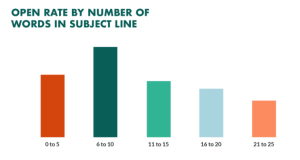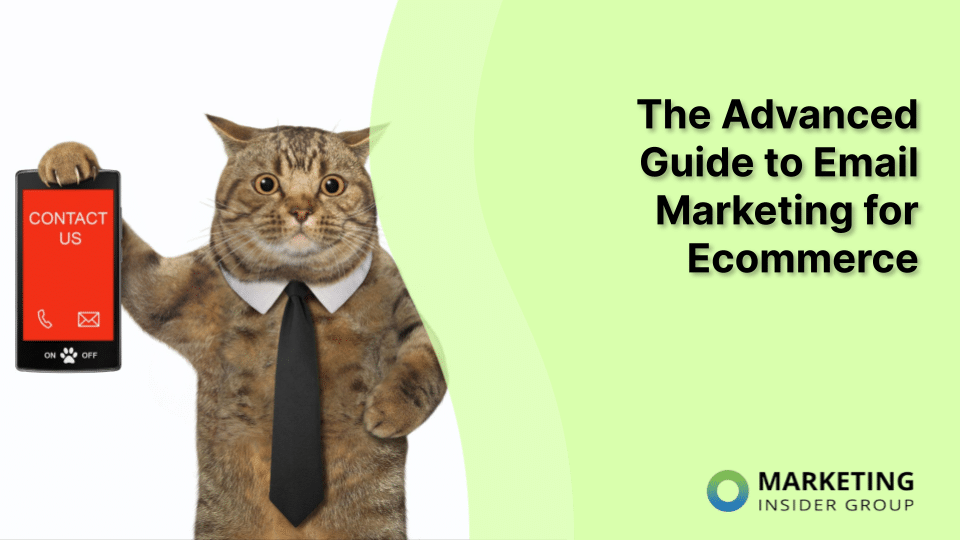
The ROI-Driven Guide to Content for Email Marketing
Think email is an outdated way to communicate with customers? Think again!
In 2021, email remains a top-three distribution channel for both B2B and B2C brands. Nearly 90% of B2B brands and 80% of B2C brands are using email as a primary distribution channel. Developing great content for email marketing is one of the most effective ways you can encourage organic sharing and increase your brand visibility.
But you know from your own email account that inboxes get flooded with marketing emails every single day. It’s up to you to create messages that stand out, resonate with customers, and drive marketing ROI for your brand.
Ready to learn how? Let’s get started.
Quick Takeaways
- Email subject lines are a huge deciding factor in whether or not a person will open your email.
- Less is more when it comes to content for email marketing — it should always be clear, relevant, and get straight to the point.
- You can create emails that stand out by showing your brand personality and focusing on how you add value for your customer.
- High-performing types of marketing emails include welcome messages, content emails, incentives, and surveys.
Best practices for optimizing email ROI
Grab attention with your subject line
The biggest mistake you can make in email marketing is making your subject line an afterthought. Basically, your subject line is the deciding factor on whether your email gets opened in the first place or goes straight to spam.
Recent research shows that 33% of people open emails because the subject line catches their attention. Conversely, 69% sent an email to spam if a subject line puts them off.
That’s a big deal!
So how can you be sure your subject lines are enticing people to open emails? Here are a few best practices we recommend:
Pay attention to length
Keep your subject lines between 6-10 words. Make your subject line too short and it may be hard to get your message across. Too long and you risk it getting cut off. Research has shown that 6-10 words is the subject line sweet spot (8 words is ideal) so aim for it each time you create a new email!

Use personalization
You can also personalize your email subject line to increase the likelihood your recipient will open it, but keep in mind that just adding a name isn’t as effective as it used to be. Try using other personalization tokens that stand out more than just a first name.
For example: a pet store promoting a sale might steer away from saying, “Susie, don’t miss this deal on dog treats!” and instead use the pet’s name — “Fido definitely needs these new treats!”
Other great personalization tokens to use are location, birthdays, or transaction histories (i.e. if you loved [name of product] we think you’ll love this, too!).
Be straightforward
This doesn’t mean you can’t add a little mystery to your subject line. In fact, teaser subject lines are really effective. But definitely be clear about what the email is about, and never deceive by promising something in your subject line that you can’t deliver on in your email.
Personalize your emails
Let’s jump back to personalization. First names may not make the huge impact they once did when it comes to subject line open rates. But they do still affect the overall tone of your email message. Specifically, they make it feel more personal and create a connection between you and your customer.
Definitely do include your customer’s name in the body of your email and speak directly to them throughout your message.
Get to the point
Your email is likely one of many that your customer is reading through. That’s why it’s important to get right to the point in your email message. Make your message clear in the beginning so that your customer knows what they’re reading, and add details later for those who decide to stick around.
Even those details, though, shouldn’t be too verbose. According to Campaign Monitor, the ideal length for email copy is 50-125 words. This may sound short, but remember you can supplement your content with images and link out to longer stories and announcements when needed.
While there are of course some exceptions to this rule, the key takeaway to keep in mind is that content should always be concise. Be clear and include what is necessary to make your message impactful, but save the bells and whistles for other content.
Focus on value
When you share any marketing message with your audience, including through email, always focus on benefits first and features second.
Ultimately, your customer is seeking solutions that can help them solve problems. By communicating benefits first, you show your customer right away how your products and services can add value for them. This is what they care about the most.
https://www.youtube.com/watch?v=L6FfJNSOiAU
Once customers understand why you’re valuable and relevant for them, they’ll stick around to learn more about features. That information, though, can often be shared by linking to your website rather than including it all in your email message (remember we’re going for 50-125 worlds).
Show your brand personality
Your brand personality is what makes your brand unique. It’s what connects you with your customers. Your emails should always reflect your brand personality in design, language, and overall messaging. Do this by including your recognizable logo and color scheme and writing unique copy that’s reflective of your brand.
Most email marketers use templates to design consistent and visually appealing email messages. Email marketing platforms provide specific templates for different purposes and types of email messages. These are really useful tools, but be sure that no matter what template you use, you incorporate elements that let your brand personality shine through.
High-performing content for email marketing
There’s no question that the worst thing you can do as an email marketer is spam your subscribers. Automated emails are valuable, but you should never send an email just to send an email. There should always be a clear purpose behind your message that your subscribers can recognize.
Here are some common types of email messages that have a clear purpose and perform well.
Welcome messages
Welcome emails are the one email you definitely do not want to skip sending. Today they are pretty much a standard part of the subscription or online account creation process for online users. In other words, people expect to see welcome emails come through after they subscribe to a brand.
Not convinced? Consider this: research has found that welcome emails are one the most effective type of triggered emails (along with cart abandonment emails). They have a 91% open rate on average and 5x the click-through rate of a regular email marketing campaign.
Welcome emails are also your opportunity to make a great first impression, sharing the kinds of awesome content your subscribers can expect to receive from your brand. Don’t miss the opportunity — think strategically about your welcome emails and never skip sending them.
Content marketing emails
If one of your main content marketing strategies is your blog (if it’s not, it should be), you can use email as a way to increase your content’s visibility and shareability. New content can be shared in a newsletter that’s sent out weekly or monthly. You can also highlight individual blog posts by sending them individually to your subscriber list after they’re published.
Don’t expect your subscribers to remember to visit your website and scroll through your content regularly. The average online user is subscribed to many brands, and you need to curate and share content regularly in order for them to keep engaging with your brand.
Content marketing emails are one of the best ways you can share content consistently.
Incentives
Who doesn’t love a good deal? Incentive emails catch people’s attention because by nature they offer a benefit, like discounts or members-only access to something valuable. Think about the types of incentives your brand offers and consider incorporating them into your email marketing schedule to drive engagement and sales.
Feedback or survey emails
Sending emails to collect feedback from your subscribers is a win-win. It makes your customers feel valued when you ask for their feedback, and it gives your company important insights into how your content is resonating with your audience.
There are some important best practices to follow when you’re sending surveys. Define the goals for your survey and keep questions focused on information that helps you attain it. Don’t let your survey get too long; only include questions that are necessary and relevant. Consider adding an incentive (like a discount or free product) to drive higher participation in your survey.
Here’s more on writing great customer survey questions:
https://www.youtube.com/watch?v=OfdiPj4S4nY&t=47s
Start creating great content for email marketing today
Strong email marketing ROI depends on having great content to share. Marketing Insider Group has a team of writers who can deliver you ready-to-publish, optimized content every single week for a year (or more!). Our Content Builder Service includes a content audit and customized editorial plan so you can feel confident in your content schedule across channels.
Set up a quick consultation today to learn more and get started!






